| View previous topic :: View next topic |
| Author |
Message |
thePiRaTE!!


Joined: 31 Oct 2008
Posts: 416
Location: Canada
|
 Posted: Fri Feb 20, 2009 10:53 am Post subject: Biotar - T or not to T, that is the question. Posted: Fri Feb 20, 2009 10:53 am Post subject: Biotar - T or not to T, that is the question. |
 |
|
thePiRaTE!! wrote:
I positive this topic must have come up here, but I've just gone way back into the archives and come up blank on this specific topic. If anyone knows of a thread link feel free to post here.
My question is simply - does the 'T' on some Biotars imply it is coated while others are not, or do later Biotars have coating anyways regardless? I have a later version 75/1.5 Exa with no T and have to be pretty careful about flare and wash-out in sunlight (more than with other lenses). Has anyone noted any difference in shooting between versions?
Thanks,
K.
_________________
kellysereda.com
Sony A7ii, A900, NEX-5
_______________________
Helios: 1.5/85 40-2.
Meyer-Optik: Trioplan 2.8/100, Oreston 1.8/50.
Minolta: Rokkor-PG 1.2/58.
Porst: 1.2/55 Color Reflex.
Sony: 4-5.6/70-400 G.
Takumar: Super Takumar 3.5/135, Super Takumar 1.4/50, SMC Takumar 3.5/28.
Topcon: Topcor 1.4/58.
Voigtländer: Nokton Classic SC 1.4/35.
Zeiss: Planar T*1.2/85 "60 jahre" C/Y, Vario-Sonnar T*3.4/35-70 C/Y, Vario-Sonnar T*2.8/16-35 ZA, Distagon T*2/24 ZA.
lenses for sale here |
|
| Back to top |
|
 |
no-X


Joined: 19 Jul 2008
Posts: 2495
Location: Budejky, Czech Republic
|
 Posted: Fri Feb 20, 2009 11:30 am Post subject: Posted: Fri Feb 20, 2009 11:30 am Post subject: |
 |
|
no-X wrote:
T should mean better coating. All M42 alu CZJ lenses are coated, I think.
Yesterday, I looked on my silver CZJ lenses and I discovered, that color of the coating is not identical. Some of them has purple coating, others more blue. And red T doesn't matter. T Biotars are mostly blue, non-T Biotars are more purple, but the old manual T Biotars are somewhere between. Both T Tessars (40/4.5 and 50/2.8 ) are not blue (despite T mark); only purple. The late semi-auto Biotar 58/2 (non-T) is purple.
I'd say only some T lenses has the blue coating (biotars). And all non-T lenses + all Tessars (which are not prone to flares) are purple...
In fact the blue-coated lenses are blue + purple, the others are purple only... could it mean, that the T coating is a primitive form of multi-coating (2-layers)?
_________________
(almost) complete list of Helios lenses |
|
| Back to top |
|
 |
estudleon


Joined: 15 May 2008
Posts: 3754
Location: Argentina
|
 Posted: Fri Feb 20, 2009 12:26 pm Post subject: Posted: Fri Feb 20, 2009 12:26 pm Post subject: |
 |
|
estudleon wrote:
The MC in tessar desingn is antieconomic. Almost all (or all directly) the tessar not MC, single coat.
Today and in the past too. The last Elmar 50/2,8 Leica M is single coat too. So I think that this question not change there is, or not, a T in the lens.
Rino.
_________________
Konica 2,8/100
CZJ: 4/20, 2,4/35, 1,8/50 aus jena, 3,5/135MC, Pentacon 1,8/50
Pentax S-M-C-1,4/50
Helios 44-3
Mamiya 2,8/135
Misc. : jupiter 9
Stuff used:
A) SRL
Alpa 10 D - kern macro Switar 1,9/50 -black, Kilffit apochromat 2/100.
Asahi pentax spotmatic super takumar 1,4/50
Contaflex super B tessar 2,8/50 Pro-tessar 115
Leica R3 electronic summicron 2/50 elmarit 2,8/35
Konica Autoreflex 3 (2 black and chrome one), TC, T4. 2,8/24, 3,5/28 not MC and MC, 1,8/40, 1,4/50, 1,7/50 MC and not MC, 1,8/85, 3,2/135, 3,5/135, 4/200
Minolta XG9 2,8/35, 2/45, 3,5/135
Nikkormat FTn 1,4/50, 2,8/135
Fujica ST 801, 605, 705n. 3,5/19, 1,4/50, 1,8/55, 4/85, 3,5/135.
Praktica MTL 5 and a lot of M42 lenses.
Voigtlander. Bessamatic m, bessamatix de luxe, bessamatic cs, ultramatic and ultramatic cs.
Skoparex 3,5/35, skopagon 2/40, skopar 2,8/50, skopar X 2,8/50, super lanthar (out of catalogue) 2,8/50, dinarex 3,4/90, dinarex 4,8/100, super dinarex 4/135, super dinarex 4/200, zoomar 2,8/36-83, portrait lens 0, 1 and 2. Curtagon 4/28 and 2,8/35
Canon AV1, 1,8/50
Rolleiflex SL35 and SL35 E. 2,8/35 angulon, 2,8/35 distagon, 1,4/55 rolleinar, 1,8/50 planar, 4/135 tessar, 2,8/135 rolleinar, x2 rollei, M42 to rollei adap.
Etc.
RF
Yashica Minister III
Voightlander Vito, vitomatic I, Vito C, etc.
Leica M. M2, M3 (d.s.) and M4. Schenider 3,4/21, 2/35 summaron 2,8/35 (with eyes). Summicron 2/35 (8 elements with eyes), 2/35 chrome, 2/35 black, 1,4/35 pre asph and aspheric - old -, 2/40 summicron, 2,8/50 elmar, 2/50 7 elements, 2/50 DR, 2/50 - minolta version, 1,4/50 summilux 1966 version, 1,4/75 summilux, 2/90 large version, 2/90 reduced version of 1987, 2,8/90 elmarit large version, 4/135 elmar. |
|
| Back to top |
|
 |
convert1

Joined: 05 Aug 2008
Posts: 100
Location: Germany
|
 Posted: Fri Feb 20, 2009 8:56 pm Post subject: Posted: Fri Feb 20, 2009 8:56 pm Post subject: |
 |
|
convert1 wrote:
thePiRaTE!! wrote: ....Has anyone noted any difference in shooting between versions?
I have Biotar 2/58mm with no T, and Biotar 1,5/75mm with T.
I have compared the results and Biotar 1,5/75mm with T shows more resistance
against flare. Hope this helps.
_________________
http://www.flickr.com/photos/convert1/ |
|
| Back to top |
|
 |
thePiRaTE!!


Joined: 31 Oct 2008
Posts: 416
Location: Canada
|
 Posted: Sat Feb 21, 2009 1:02 am Post subject: Posted: Sat Feb 21, 2009 1:02 am Post subject: |
 |
|
thePiRaTE!! wrote:
| convert1 wrote: |
I have Biotar 2/58mm with no T, and Biotar 1,5/75mm with T.
I have compared the results and Biotar 1,5/75mm with T shows more resistance
against flare. Hope this helps. |
It does help actually. Of course, photos would be very welcome  The thing I don't get is that going on serial numbers, many M42 'T's are actually many years earlier than my late Exa one without. The thing I don't get is that going on serial numbers, many M42 'T's are actually many years earlier than my late Exa one without.
K.
_________________
kellysereda.com
Sony A7ii, A900, NEX-5
_______________________
Helios: 1.5/85 40-2.
Meyer-Optik: Trioplan 2.8/100, Oreston 1.8/50.
Minolta: Rokkor-PG 1.2/58.
Porst: 1.2/55 Color Reflex.
Sony: 4-5.6/70-400 G.
Takumar: Super Takumar 3.5/135, Super Takumar 1.4/50, SMC Takumar 3.5/28.
Topcon: Topcor 1.4/58.
Voigtländer: Nokton Classic SC 1.4/35.
Zeiss: Planar T*1.2/85 "60 jahre" C/Y, Vario-Sonnar T*3.4/35-70 C/Y, Vario-Sonnar T*2.8/16-35 ZA, Distagon T*2/24 ZA.
lenses for sale here |
|
| Back to top |
|
 |
koji


Joined: 21 Jul 2008
Posts: 2106
Location: Hiroshima, Japan
Expire: 2012-12-27
|
 Posted: Sat Feb 21, 2009 2:21 am Post subject: Posted: Sat Feb 21, 2009 2:21 am Post subject: |
 |
|
koji wrote:
| estudleon wrote: |
The MC in tessar desingn is antieconomic. Almost all (or all directly) the tessar not MC, single coat.
Today and in the past too. The last Elmar 50/2,8 Leica M is single coat too. So I think that this question not change there is, or not, a T in the lens.
Rino. |
The only MC tessar from CZJ is Prakticar 50/2.8 (tessar design) historically.
This tessar design Prakticar is relatively rare, onetime it fetched US$1,500
at ePay. Today no one pays such an amount for 35mm format tessar lens.
By this Prakticar 50/2.8
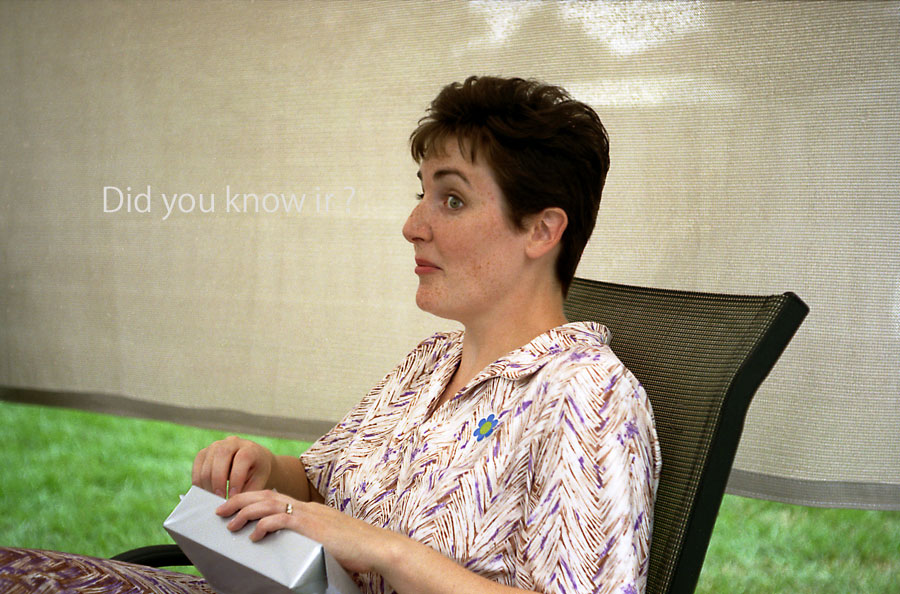
_________________
Our Home Page has 18,200 photos in 575 directories today.
Lenses: https://www.pbase.com/kkawakami/top_level_my_lenses |
|
| Back to top |
|
 |
thePiRaTE!!


Joined: 31 Oct 2008
Posts: 416
Location: Canada
|
 Posted: Sat Feb 21, 2009 4:51 am Post subject: Posted: Sat Feb 21, 2009 4:51 am Post subject: |
 |
|
thePiRaTE!! wrote:
| koji wrote: |
| estudleon wrote: |
The MC in tessar desingn is antieconomic. Almost all (or all directly) the tessar not MC, single coat.
Today and in the past too. The last Elmar 50/2,8 Leica M is single coat too. So I think that this question not change there is, or not, a T in the lens.
Rino. |
The only MC tessar from CZJ is Prakticar 50/2.8 (tessar design) historically.
This tessar design Prakticar is relatively rare, onetime it fetched US$1,500
at ePay. Today no one pays such an amount for 35mm format tessar lens.
By this Prakticar 50/2.8
 |
Thanks Koji. Shot looks well contrasted. I was also informed that for some makes, MC stands for 'meter coupled' (where the aperture lever could be switched to auto for example) not sure after Pentax where it means Multi-coated or not.
Thanks!
Kelly.
_________________
kellysereda.com
Sony A7ii, A900, NEX-5
_______________________
Helios: 1.5/85 40-2.
Meyer-Optik: Trioplan 2.8/100, Oreston 1.8/50.
Minolta: Rokkor-PG 1.2/58.
Porst: 1.2/55 Color Reflex.
Sony: 4-5.6/70-400 G.
Takumar: Super Takumar 3.5/135, Super Takumar 1.4/50, SMC Takumar 3.5/28.
Topcon: Topcor 1.4/58.
Voigtländer: Nokton Classic SC 1.4/35.
Zeiss: Planar T*1.2/85 "60 jahre" C/Y, Vario-Sonnar T*3.4/35-70 C/Y, Vario-Sonnar T*2.8/16-35 ZA, Distagon T*2/24 ZA.
lenses for sale here |
|
| Back to top |
|
 |
convert1

Joined: 05 Aug 2008
Posts: 100
Location: Germany
|
 Posted: Sat Feb 21, 2009 7:37 am Post subject: Posted: Sat Feb 21, 2009 7:37 am Post subject: |
 |
|
convert1 wrote:
thePiRaTE!! wrote:...photos would be very welcome....
Hi, the different will be seen between upper and lower source light (blue flare). Since the pics resized, it might be not to be seen as I wish. Please have a look at my flickr.
Taken with 5D + Biotar 2/58mm @f2
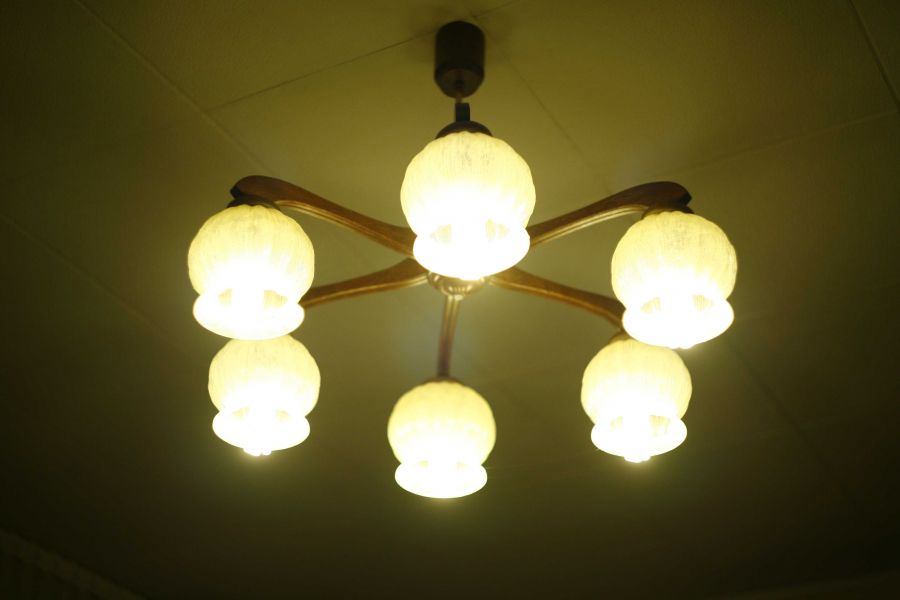
Taken with 5D + Biotar 1,5/75mm T @f2
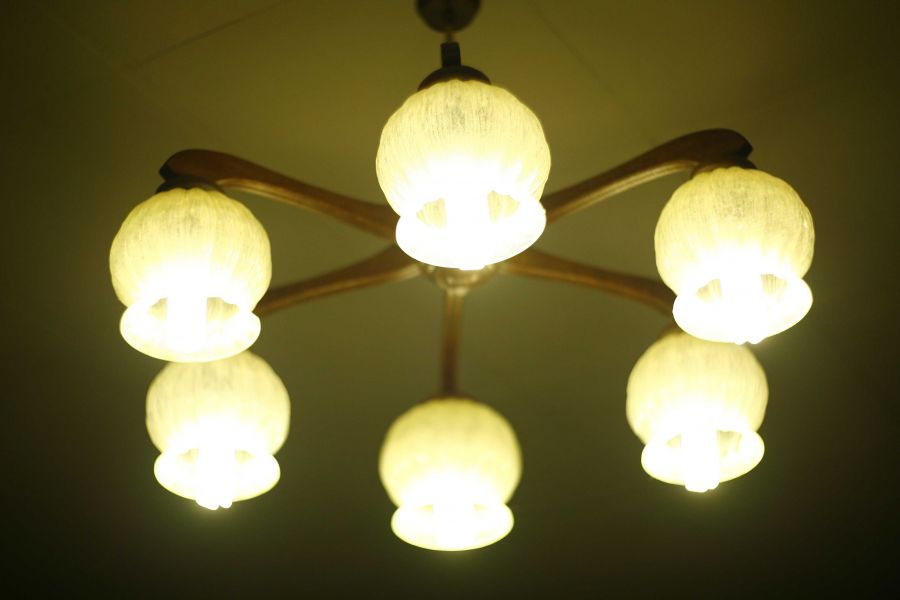
The both Biotar M42 Version was taken with Tomioka 60mm @f4
Biotar 1,5/75mm T, meter scale only, fat version (there are 3 different versions), build in 1952
[/img]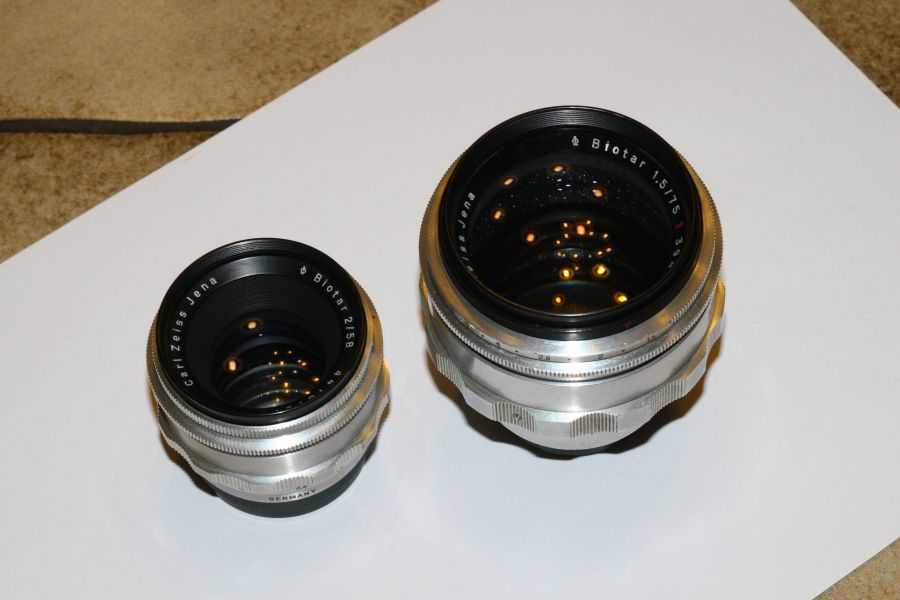
Hope this helps
Kind regards
_________________
http://www.flickr.com/photos/convert1/ |
|
| Back to top |
|
 |
estudleon


Joined: 15 May 2008
Posts: 3754
Location: Argentina
|
 Posted: Sat Feb 21, 2009 11:58 am Post subject: Posted: Sat Feb 21, 2009 11:58 am Post subject: |
 |
|
estudleon wrote:
| koji wrote: |
| estudleon wrote: |
The MC in tessar desingn is antieconomic. Almost all (or all directly) the tessar not MC, single coat.
Today and in the past too. The last Elmar 50/2,8 Leica M is single coat too. So I think that this question not change there is, or not, a T in the lens.
Rino. |
The only MC tessar from CZJ is Prakticar 50/2.8 (tessar design) historically.
This tessar design Prakticar is relatively rare, onetime it fetched US$1,500
at ePay. Today no one pays such an amount for 35mm format tessar lens.
By this Prakticar 50/2.8
 |
MC tessar? So It's a jewel.
I see the lens in your prakticar's page, and read the lens ring where say "MC".
But really I doubt that this was truth. Contax didn't a MC Tessar. Leica didn't a MC Elmarit. Eastern Germany would put in that cost by the end of 70's ?
We're talking about 4 surfaces air-glass only, where the difference between MC and SC it does not justify the cost of the MC.
In addition, if the lens is watched, we will see that the frontal element is deeply located in the body of the lens, which serves to it like lenshade. It but the little amount of surfaces air-glasses makes the MC. unnecessary
But these are not more than speculations, if it is MC.
Regards, Rino.
_________________
Konica 2,8/100
CZJ: 4/20, 2,4/35, 1,8/50 aus jena, 3,5/135MC, Pentacon 1,8/50
Pentax S-M-C-1,4/50
Helios 44-3
Mamiya 2,8/135
Misc. : jupiter 9
Stuff used:
A) SRL
Alpa 10 D - kern macro Switar 1,9/50 -black, Kilffit apochromat 2/100.
Asahi pentax spotmatic super takumar 1,4/50
Contaflex super B tessar 2,8/50 Pro-tessar 115
Leica R3 electronic summicron 2/50 elmarit 2,8/35
Konica Autoreflex 3 (2 black and chrome one), TC, T4. 2,8/24, 3,5/28 not MC and MC, 1,8/40, 1,4/50, 1,7/50 MC and not MC, 1,8/85, 3,2/135, 3,5/135, 4/200
Minolta XG9 2,8/35, 2/45, 3,5/135
Nikkormat FTn 1,4/50, 2,8/135
Fujica ST 801, 605, 705n. 3,5/19, 1,4/50, 1,8/55, 4/85, 3,5/135.
Praktica MTL 5 and a lot of M42 lenses.
Voigtlander. Bessamatic m, bessamatix de luxe, bessamatic cs, ultramatic and ultramatic cs.
Skoparex 3,5/35, skopagon 2/40, skopar 2,8/50, skopar X 2,8/50, super lanthar (out of catalogue) 2,8/50, dinarex 3,4/90, dinarex 4,8/100, super dinarex 4/135, super dinarex 4/200, zoomar 2,8/36-83, portrait lens 0, 1 and 2. Curtagon 4/28 and 2,8/35
Canon AV1, 1,8/50
Rolleiflex SL35 and SL35 E. 2,8/35 angulon, 2,8/35 distagon, 1,4/55 rolleinar, 1,8/50 planar, 4/135 tessar, 2,8/135 rolleinar, x2 rollei, M42 to rollei adap.
Etc.
RF
Yashica Minister III
Voightlander Vito, vitomatic I, Vito C, etc.
Leica M. M2, M3 (d.s.) and M4. Schenider 3,4/21, 2/35 summaron 2,8/35 (with eyes). Summicron 2/35 (8 elements with eyes), 2/35 chrome, 2/35 black, 1,4/35 pre asph and aspheric - old -, 2/40 summicron, 2,8/50 elmar, 2/50 7 elements, 2/50 DR, 2/50 - minolta version, 1,4/50 summilux 1966 version, 1,4/75 summilux, 2/90 large version, 2/90 reduced version of 1987, 2,8/90 elmarit large version, 4/135 elmar. |
|
| Back to top |
|
 |
Abbazz


Joined: 23 Jun 2007
Posts: 1098
Location: Jakarta
|
 Posted: Sat Feb 21, 2009 12:13 pm Post subject: Posted: Sat Feb 21, 2009 12:13 pm Post subject: |
 |
|
Abbazz wrote:
| estudleon wrote: |
| We're talking about 4 surfaces air-glass only, where the difference between MC and SC it does not justify the cost of the MC. |
4 surfaces? I thought we were talking about Tessar lenses?
Cheers!
Abbazz
_________________
Il n'y a rien dans le monde qui n'ait son moment decisif, et le chef-d'oeuvre de la bonne conduite est de connaitre et de prendre ce moment. - Cardinal de Retz
The 6x9 Photography Online Resource:
http://artbig.com/ |
|
| Back to top |
|
 |
estudleon


Joined: 15 May 2008
Posts: 3754
Location: Argentina
|
 Posted: Sat Feb 21, 2009 12:28 pm Post subject: Posted: Sat Feb 21, 2009 12:28 pm Post subject: |
 |
|
estudleon wrote:
| Abbazz wrote: |
| estudleon wrote: |
| We're talking about 4 surfaces air-glass only, where the difference between MC and SC it does not justify the cost of the MC. |
4 surfaces? I thought we were talking about Tessar lenses?
Cheers!
Abbazz |
Yes, it has only four internal surfaces air-glass
Koji permission, please:
http://www.pbase.com/kkawakami/lens_design
Now, if you want to consider the 2 surfaces " external " (that all the lenses have, reason why redundant is its consideration to distinguish the designs to the effects of the reflections), are 6 surfaces air-glass. But such consideration does not affect the content of the text, unless you want to mean something with your post.
Rino.
_________________
Konica 2,8/100
CZJ: 4/20, 2,4/35, 1,8/50 aus jena, 3,5/135MC, Pentacon 1,8/50
Pentax S-M-C-1,4/50
Helios 44-3
Mamiya 2,8/135
Misc. : jupiter 9
Stuff used:
A) SRL
Alpa 10 D - kern macro Switar 1,9/50 -black, Kilffit apochromat 2/100.
Asahi pentax spotmatic super takumar 1,4/50
Contaflex super B tessar 2,8/50 Pro-tessar 115
Leica R3 electronic summicron 2/50 elmarit 2,8/35
Konica Autoreflex 3 (2 black and chrome one), TC, T4. 2,8/24, 3,5/28 not MC and MC, 1,8/40, 1,4/50, 1,7/50 MC and not MC, 1,8/85, 3,2/135, 3,5/135, 4/200
Minolta XG9 2,8/35, 2/45, 3,5/135
Nikkormat FTn 1,4/50, 2,8/135
Fujica ST 801, 605, 705n. 3,5/19, 1,4/50, 1,8/55, 4/85, 3,5/135.
Praktica MTL 5 and a lot of M42 lenses.
Voigtlander. Bessamatic m, bessamatix de luxe, bessamatic cs, ultramatic and ultramatic cs.
Skoparex 3,5/35, skopagon 2/40, skopar 2,8/50, skopar X 2,8/50, super lanthar (out of catalogue) 2,8/50, dinarex 3,4/90, dinarex 4,8/100, super dinarex 4/135, super dinarex 4/200, zoomar 2,8/36-83, portrait lens 0, 1 and 2. Curtagon 4/28 and 2,8/35
Canon AV1, 1,8/50
Rolleiflex SL35 and SL35 E. 2,8/35 angulon, 2,8/35 distagon, 1,4/55 rolleinar, 1,8/50 planar, 4/135 tessar, 2,8/135 rolleinar, x2 rollei, M42 to rollei adap.
Etc.
RF
Yashica Minister III
Voightlander Vito, vitomatic I, Vito C, etc.
Leica M. M2, M3 (d.s.) and M4. Schenider 3,4/21, 2/35 summaron 2,8/35 (with eyes). Summicron 2/35 (8 elements with eyes), 2/35 chrome, 2/35 black, 1,4/35 pre asph and aspheric - old -, 2/40 summicron, 2,8/50 elmar, 2/50 7 elements, 2/50 DR, 2/50 - minolta version, 1,4/50 summilux 1966 version, 1,4/75 summilux, 2/90 large version, 2/90 reduced version of 1987, 2,8/90 elmarit large version, 4/135 elmar. |
|
| Back to top |
|
 |
no-X


Joined: 19 Jul 2008
Posts: 2495
Location: Budejky, Czech Republic
|
 Posted: Sat Feb 21, 2009 1:14 pm Post subject: Posted: Sat Feb 21, 2009 1:14 pm Post subject: |
 |
|
no-X wrote:
Biotar T vs. non-T
The T version is older (35...) thant the non-T (44...)

_________________
(almost) complete list of Helios lenses |
|
| Back to top |
|
 |
estudleon


Joined: 15 May 2008
Posts: 3754
Location: Argentina
|
 Posted: Sat Feb 21, 2009 1:21 pm Post subject: Posted: Sat Feb 21, 2009 1:21 pm Post subject: |
 |
|
estudleon wrote:
| no-X wrote: |
Biotar T vs. non-T
The T version is older (35...) thant the non-T (44...)
 |
Well done.
The newer has a pale purple reflection, the older a blue and stronger.
Any difference in pic?
Regards, Rino.
_________________
Konica 2,8/100
CZJ: 4/20, 2,4/35, 1,8/50 aus jena, 3,5/135MC, Pentacon 1,8/50
Pentax S-M-C-1,4/50
Helios 44-3
Mamiya 2,8/135
Misc. : jupiter 9
Stuff used:
A) SRL
Alpa 10 D - kern macro Switar 1,9/50 -black, Kilffit apochromat 2/100.
Asahi pentax spotmatic super takumar 1,4/50
Contaflex super B tessar 2,8/50 Pro-tessar 115
Leica R3 electronic summicron 2/50 elmarit 2,8/35
Konica Autoreflex 3 (2 black and chrome one), TC, T4. 2,8/24, 3,5/28 not MC and MC, 1,8/40, 1,4/50, 1,7/50 MC and not MC, 1,8/85, 3,2/135, 3,5/135, 4/200
Minolta XG9 2,8/35, 2/45, 3,5/135
Nikkormat FTn 1,4/50, 2,8/135
Fujica ST 801, 605, 705n. 3,5/19, 1,4/50, 1,8/55, 4/85, 3,5/135.
Praktica MTL 5 and a lot of M42 lenses.
Voigtlander. Bessamatic m, bessamatix de luxe, bessamatic cs, ultramatic and ultramatic cs.
Skoparex 3,5/35, skopagon 2/40, skopar 2,8/50, skopar X 2,8/50, super lanthar (out of catalogue) 2,8/50, dinarex 3,4/90, dinarex 4,8/100, super dinarex 4/135, super dinarex 4/200, zoomar 2,8/36-83, portrait lens 0, 1 and 2. Curtagon 4/28 and 2,8/35
Canon AV1, 1,8/50
Rolleiflex SL35 and SL35 E. 2,8/35 angulon, 2,8/35 distagon, 1,4/55 rolleinar, 1,8/50 planar, 4/135 tessar, 2,8/135 rolleinar, x2 rollei, M42 to rollei adap.
Etc.
RF
Yashica Minister III
Voightlander Vito, vitomatic I, Vito C, etc.
Leica M. M2, M3 (d.s.) and M4. Schenider 3,4/21, 2/35 summaron 2,8/35 (with eyes). Summicron 2/35 (8 elements with eyes), 2/35 chrome, 2/35 black, 1,4/35 pre asph and aspheric - old -, 2/40 summicron, 2,8/50 elmar, 2/50 7 elements, 2/50 DR, 2/50 - minolta version, 1,4/50 summilux 1966 version, 1,4/75 summilux, 2/90 large version, 2/90 reduced version of 1987, 2,8/90 elmarit large version, 4/135 elmar. |
|
| Back to top |
|
 |
Abbazz


Joined: 23 Jun 2007
Posts: 1098
Location: Jakarta
|
 Posted: Sat Feb 21, 2009 1:25 pm Post subject: Posted: Sat Feb 21, 2009 1:25 pm Post subject: |
 |
|
Abbazz wrote:
| estudleon wrote: |
| Yes, it has only four internal surfaces air-glass |
That's the first time I hear someone qualifying the Tessar as having "four internal surfaces air-glass." 
| estudleon wrote: |
| But such consideration does not affect the content of the text, unless you want to mean something with your post. |
Yes indeed, I hope I do mean something with my posts.
Cheers!
Abbazz
_________________
Il n'y a rien dans le monde qui n'ait son moment decisif, et le chef-d'oeuvre de la bonne conduite est de connaitre et de prendre ce moment. - Cardinal de Retz
The 6x9 Photography Online Resource:
http://artbig.com/ |
|
| Back to top |
|
 |
no-X


Joined: 19 Jul 2008
Posts: 2495
Location: Budejky, Czech Republic
|
 Posted: Sat Feb 21, 2009 1:26 pm Post subject: Posted: Sat Feb 21, 2009 1:26 pm Post subject: |
 |
|
no-X wrote:
It's overcast - I'll wait for sun (maybe till the end of next week  ). ).
_________________
(almost) complete list of Helios lenses |
|
| Back to top |
|
 |
koji


Joined: 21 Jul 2008
Posts: 2106
Location: Hiroshima, Japan
Expire: 2012-12-27
|
 Posted: Sat Feb 21, 2009 1:57 pm Post subject: Posted: Sat Feb 21, 2009 1:57 pm Post subject: |
 |
|
koji wrote:
Permission granted, Rino. 
I always thought Tessar has 6 air-to-lens surfaces.
Prakticar 50/2.8 has really Multi-Coating, very deep blue beautiful one.
One reason CZJ used MC for Prakicar 50/2.8 is to retain uniform colour
rendering for all the Prakticars, which is the same idea as Nikon NIC (Nikon
Integral Coating), this feature is very clearly recognizable if you use them.
_________________
Our Home Page has 18,200 photos in 575 directories today.
Lenses: https://www.pbase.com/kkawakami/top_level_my_lenses |
|
| Back to top |
|
 |
estudleon


Joined: 15 May 2008
Posts: 3754
Location: Argentina
|
 Posted: Sat Feb 21, 2009 2:05 pm Post subject: Posted: Sat Feb 21, 2009 2:05 pm Post subject: |
 |
|
estudleon wrote:
| Abbazz wrote: |
| estudleon wrote: |
| Yes, it has only four internal surfaces air-glass |
That's the first time I hear someone qualifying the Tessar as having "four internal surfaces air-glass." 
| estudleon wrote: |
| But such consideration does not affect the content of the text, unless you want to mean something with your post. |
Yes indeed, I hope I do mean something with my posts.
Cheers!
Abbazz |
I'm sorry for you, but I read and hear this to lot of specialized optics
Well, anyway, we can learn anything all the times. 
And yes, you mean something with your post (everybody do this), I refer
to one post in individual, no more than this.
I think that you are very enabled to give your opinion on the bottom
question (tessar's MC, convenience or not, etc), and sure it will be very
interesant Perhaps you had done it and I did not understand it, of there my commentary.
Regards,
R I N O
_________________
Konica 2,8/100
CZJ: 4/20, 2,4/35, 1,8/50 aus jena, 3,5/135MC, Pentacon 1,8/50
Pentax S-M-C-1,4/50
Helios 44-3
Mamiya 2,8/135
Misc. : jupiter 9
Stuff used:
A) SRL
Alpa 10 D - kern macro Switar 1,9/50 -black, Kilffit apochromat 2/100.
Asahi pentax spotmatic super takumar 1,4/50
Contaflex super B tessar 2,8/50 Pro-tessar 115
Leica R3 electronic summicron 2/50 elmarit 2,8/35
Konica Autoreflex 3 (2 black and chrome one), TC, T4. 2,8/24, 3,5/28 not MC and MC, 1,8/40, 1,4/50, 1,7/50 MC and not MC, 1,8/85, 3,2/135, 3,5/135, 4/200
Minolta XG9 2,8/35, 2/45, 3,5/135
Nikkormat FTn 1,4/50, 2,8/135
Fujica ST 801, 605, 705n. 3,5/19, 1,4/50, 1,8/55, 4/85, 3,5/135.
Praktica MTL 5 and a lot of M42 lenses.
Voigtlander. Bessamatic m, bessamatix de luxe, bessamatic cs, ultramatic and ultramatic cs.
Skoparex 3,5/35, skopagon 2/40, skopar 2,8/50, skopar X 2,8/50, super lanthar (out of catalogue) 2,8/50, dinarex 3,4/90, dinarex 4,8/100, super dinarex 4/135, super dinarex 4/200, zoomar 2,8/36-83, portrait lens 0, 1 and 2. Curtagon 4/28 and 2,8/35
Canon AV1, 1,8/50
Rolleiflex SL35 and SL35 E. 2,8/35 angulon, 2,8/35 distagon, 1,4/55 rolleinar, 1,8/50 planar, 4/135 tessar, 2,8/135 rolleinar, x2 rollei, M42 to rollei adap.
Etc.
RF
Yashica Minister III
Voightlander Vito, vitomatic I, Vito C, etc.
Leica M. M2, M3 (d.s.) and M4. Schenider 3,4/21, 2/35 summaron 2,8/35 (with eyes). Summicron 2/35 (8 elements with eyes), 2/35 chrome, 2/35 black, 1,4/35 pre asph and aspheric - old -, 2/40 summicron, 2,8/50 elmar, 2/50 7 elements, 2/50 DR, 2/50 - minolta version, 1,4/50 summilux 1966 version, 1,4/75 summilux, 2/90 large version, 2/90 reduced version of 1987, 2,8/90 elmarit large version, 4/135 elmar. |
|
| Back to top |
|
 |
rick_oleson


Joined: 26 Feb 2007
Posts: 386
Location: Lexington Kentucky USA
|
 Posted: Sat Feb 21, 2009 2:40 pm Post subject: Posted: Sat Feb 21, 2009 2:40 pm Post subject: |
 |
|
rick_oleson wrote:
All M42 Biotars (& Tessars) will be coated, as coating came along before the M42 mount; however, there will be uncoated lenses in Exakta mount which began 13 years earlier.
And the Tessar does have only 4 internal glass/air surfaces; it has 6 overall, but only 4 are internal. Having said that, of course, all 6 generate reflections...
_________________
I don't know what I want to be when I grow up |
|
| Back to top |
|
 |
no-X


Joined: 19 Jul 2008
Posts: 2495
Location: Budejky, Czech Republic
|
 Posted: Sat Feb 21, 2009 2:42 pm Post subject: Posted: Sat Feb 21, 2009 2:42 pm Post subject: |
 |
|
no-X wrote:
OK, I took a shot of almost all old silver lenses I have to better show the difference in colour of the coating. I added some CCCP lenses for comparison.
3 different angles (I think the second one is the best and most corresponding with reality), 4x Meyer, 8x Zeiss, 4x CCCP. All lenses are wide-opened and black rear-cap is on to ensure constant conditions:



- each Meyer lens has different color, (my) Primagon has uncoated front element, Primoplan is the old version
- CZJ T lenses are more blue, non-T lenses are more purple. The exception are Tessars. Unfortunately I have no non-T Tessar to compare (are the non-T Tessars coated?). Biometar shows some rainbows (not sure if it's caused by the coating or optical design, or combination of both)
- Helios 40 is yellow. Jupiters are from different factories, the slimmer one is marked by Π (alternative to Zeiss T). Unfortunately I have no black M42 Jupiter (neither the old version, nor the newer version, or the last MC version) to compare. Both Jupiters changes color in dependence of the angle. Helios 44 is MMZ, 44-3, which is one of the oldest CCCP MC Helios lenses
You can click the pictures to enlarge...
_________________
(almost) complete list of Helios lenses |
|
| Back to top |
|
 |
estudleon


Joined: 15 May 2008
Posts: 3754
Location: Argentina
|
 Posted: Sat Feb 21, 2009 2:56 pm Post subject: Posted: Sat Feb 21, 2009 2:56 pm Post subject: |
 |
|
estudleon wrote:
Excelent done!!!!! Luxury!!! 
COLLECTOR QUALITY JOB
One of the better jobs that I saw in any forum (and in most magazine of the first line too).
Thanks, No- X, very, very much.
My pentacon 50/1,8 has the same coated reflections than the Helios and
primoplan. 
R I N O
_________________
Konica 2,8/100
CZJ: 4/20, 2,4/35, 1,8/50 aus jena, 3,5/135MC, Pentacon 1,8/50
Pentax S-M-C-1,4/50
Helios 44-3
Mamiya 2,8/135
Misc. : jupiter 9
Stuff used:
A) SRL
Alpa 10 D - kern macro Switar 1,9/50 -black, Kilffit apochromat 2/100.
Asahi pentax spotmatic super takumar 1,4/50
Contaflex super B tessar 2,8/50 Pro-tessar 115
Leica R3 electronic summicron 2/50 elmarit 2,8/35
Konica Autoreflex 3 (2 black and chrome one), TC, T4. 2,8/24, 3,5/28 not MC and MC, 1,8/40, 1,4/50, 1,7/50 MC and not MC, 1,8/85, 3,2/135, 3,5/135, 4/200
Minolta XG9 2,8/35, 2/45, 3,5/135
Nikkormat FTn 1,4/50, 2,8/135
Fujica ST 801, 605, 705n. 3,5/19, 1,4/50, 1,8/55, 4/85, 3,5/135.
Praktica MTL 5 and a lot of M42 lenses.
Voigtlander. Bessamatic m, bessamatix de luxe, bessamatic cs, ultramatic and ultramatic cs.
Skoparex 3,5/35, skopagon 2/40, skopar 2,8/50, skopar X 2,8/50, super lanthar (out of catalogue) 2,8/50, dinarex 3,4/90, dinarex 4,8/100, super dinarex 4/135, super dinarex 4/200, zoomar 2,8/36-83, portrait lens 0, 1 and 2. Curtagon 4/28 and 2,8/35
Canon AV1, 1,8/50
Rolleiflex SL35 and SL35 E. 2,8/35 angulon, 2,8/35 distagon, 1,4/55 rolleinar, 1,8/50 planar, 4/135 tessar, 2,8/135 rolleinar, x2 rollei, M42 to rollei adap.
Etc.
RF
Yashica Minister III
Voightlander Vito, vitomatic I, Vito C, etc.
Leica M. M2, M3 (d.s.) and M4. Schenider 3,4/21, 2/35 summaron 2,8/35 (with eyes). Summicron 2/35 (8 elements with eyes), 2/35 chrome, 2/35 black, 1,4/35 pre asph and aspheric - old -, 2/40 summicron, 2,8/50 elmar, 2/50 7 elements, 2/50 DR, 2/50 - minolta version, 1,4/50 summilux 1966 version, 1,4/75 summilux, 2/90 large version, 2/90 reduced version of 1987, 2,8/90 elmarit large version, 4/135 elmar. |
|
| Back to top |
|
 |
koji


Joined: 21 Jul 2008
Posts: 2106
Location: Hiroshima, Japan
Expire: 2012-12-27
|
 Posted: Sat Feb 21, 2009 3:09 pm Post subject: Posted: Sat Feb 21, 2009 3:09 pm Post subject: |
 |
|
koji wrote:
My three tessars, clearly Prakticar 50/2.8 has MC.
Left to right> Exakta 50/2.8, M42 50/2.8, Prakticcar 50/2.8
(M42 is blueish, but it reflects the sky.)
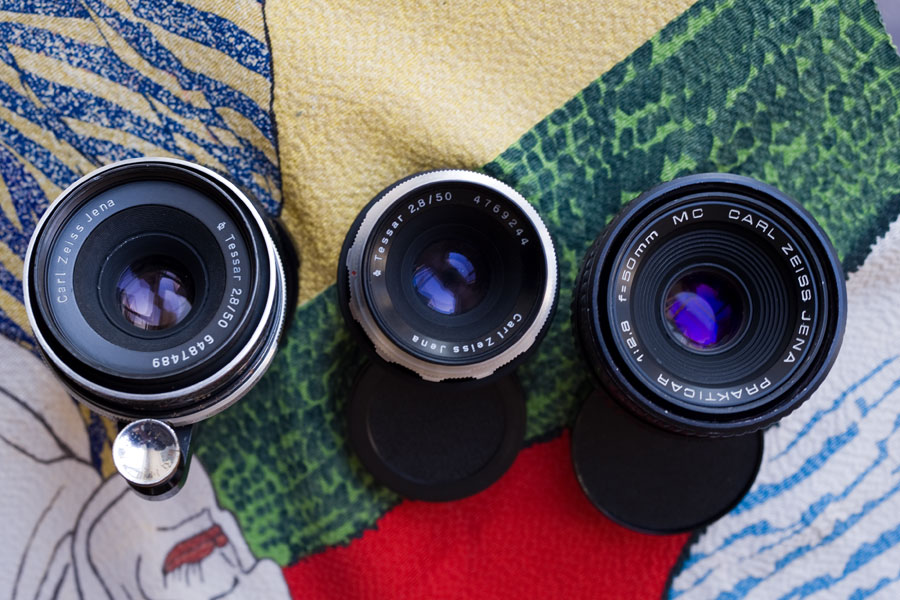
Left to right> Prakticar, M42, Exakta

Exakta S/N 64874xx (1961-1964)
M42 S/N 4769xx (1955-1958)
The both lenses do not seem to have coating, or very very pale blue
coating hardly noticeable (I cannot tell). They should have a coating?
By the way, Prakticar 50/2.8 (tessar type) was produced 1980s.
Someday I will test these tessars with MC and with pale single coat or none.
_________________
Our Home Page has 18,200 photos in 575 directories today.
Lenses: https://www.pbase.com/kkawakami/top_level_my_lenses |
|
| Back to top |
|
 |
estudleon


Joined: 15 May 2008
Posts: 3754
Location: Argentina
|
 Posted: Sat Feb 21, 2009 3:23 pm Post subject: Posted: Sat Feb 21, 2009 3:23 pm Post subject: |
 |
|
estudleon wrote:
Another great and precise job. Very good for you, Koji. Thanks. All very informative and instructive.
All the lens that you show are coated
Sure are Single coated the two tessars olders.
The prakticar has a strong coated, but I don't know if it's multilayer. I tell this because the lens reflections reminds me the reflections of the minolta 45/2 that is single coated (it has a very strong blues and yellow/red reflections like your prakticar).
Regards,
R I N O.
_________________
Konica 2,8/100
CZJ: 4/20, 2,4/35, 1,8/50 aus jena, 3,5/135MC, Pentacon 1,8/50
Pentax S-M-C-1,4/50
Helios 44-3
Mamiya 2,8/135
Misc. : jupiter 9
Stuff used:
A) SRL
Alpa 10 D - kern macro Switar 1,9/50 -black, Kilffit apochromat 2/100.
Asahi pentax spotmatic super takumar 1,4/50
Contaflex super B tessar 2,8/50 Pro-tessar 115
Leica R3 electronic summicron 2/50 elmarit 2,8/35
Konica Autoreflex 3 (2 black and chrome one), TC, T4. 2,8/24, 3,5/28 not MC and MC, 1,8/40, 1,4/50, 1,7/50 MC and not MC, 1,8/85, 3,2/135, 3,5/135, 4/200
Minolta XG9 2,8/35, 2/45, 3,5/135
Nikkormat FTn 1,4/50, 2,8/135
Fujica ST 801, 605, 705n. 3,5/19, 1,4/50, 1,8/55, 4/85, 3,5/135.
Praktica MTL 5 and a lot of M42 lenses.
Voigtlander. Bessamatic m, bessamatix de luxe, bessamatic cs, ultramatic and ultramatic cs.
Skoparex 3,5/35, skopagon 2/40, skopar 2,8/50, skopar X 2,8/50, super lanthar (out of catalogue) 2,8/50, dinarex 3,4/90, dinarex 4,8/100, super dinarex 4/135, super dinarex 4/200, zoomar 2,8/36-83, portrait lens 0, 1 and 2. Curtagon 4/28 and 2,8/35
Canon AV1, 1,8/50
Rolleiflex SL35 and SL35 E. 2,8/35 angulon, 2,8/35 distagon, 1,4/55 rolleinar, 1,8/50 planar, 4/135 tessar, 2,8/135 rolleinar, x2 rollei, M42 to rollei adap.
Etc.
RF
Yashica Minister III
Voightlander Vito, vitomatic I, Vito C, etc.
Leica M. M2, M3 (d.s.) and M4. Schenider 3,4/21, 2/35 summaron 2,8/35 (with eyes). Summicron 2/35 (8 elements with eyes), 2/35 chrome, 2/35 black, 1,4/35 pre asph and aspheric - old -, 2/40 summicron, 2,8/50 elmar, 2/50 7 elements, 2/50 DR, 2/50 - minolta version, 1,4/50 summilux 1966 version, 1,4/75 summilux, 2/90 large version, 2/90 reduced version of 1987, 2,8/90 elmarit large version, 4/135 elmar. |
|
| Back to top |
|
 |
rick_oleson


Joined: 26 Feb 2007
Posts: 386
Location: Lexington Kentucky USA
|
 Posted: Sat Feb 21, 2009 3:42 pm Post subject: Posted: Sat Feb 21, 2009 3:42 pm Post subject: |
 |
|
rick_oleson wrote:
The color of lens coating doesn't really mean a lot, except that any coated lens will have some sort of color cast to it. The coating itself has no color; the color you see in the reflection is a function of the thickness of the coating material. The reason that most lens coating looks purple is that its thickness is calculated to suppress green reflections - green being in the center of the visible spectrum - and what you see is everything EXCEPT the suppressed color. In some lenses, the different elements were coated different colors to spread the effect more uniformly across the spectrum, and this was done long before multi-coating came along... so a multi-colored reflection does not mean a multi-coated lens.
Here's an explanation of how the coating works and why you see the colors that you see: http://rick_oleson.tripod.com/index-166.html
_________________
I don't know what I want to be when I grow up |
|
| Back to top |
|
 |
koji


Joined: 21 Jul 2008
Posts: 2106
Location: Hiroshima, Japan
Expire: 2012-12-27
|
 Posted: Sat Feb 21, 2009 3:58 pm Post subject: Posted: Sat Feb 21, 2009 3:58 pm Post subject: |
 |
|
koji wrote:
You can decide SC or MC. 
Minolta 45/2 & Prakticar 50/2.8
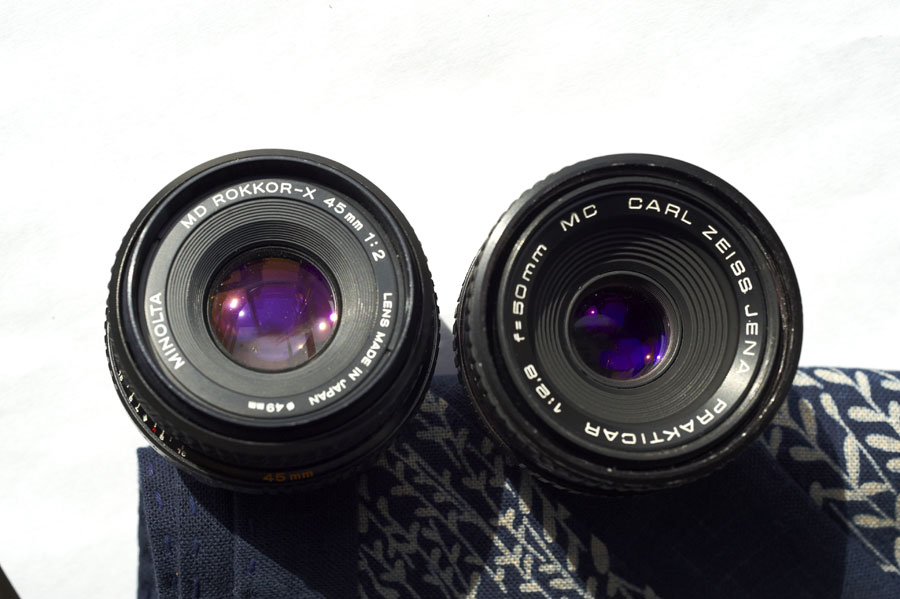
Minolta has thinner coating than Prakticar
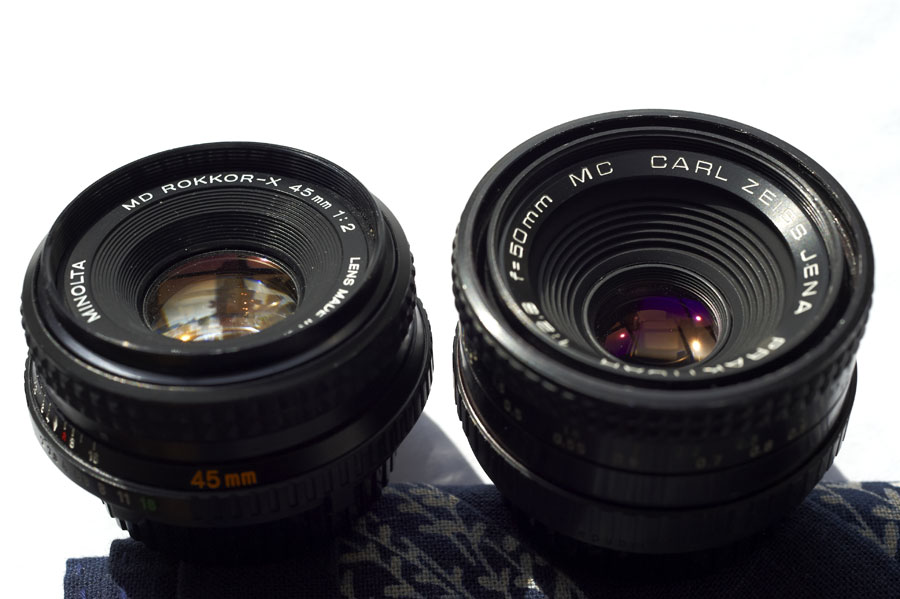
at back the same as the above
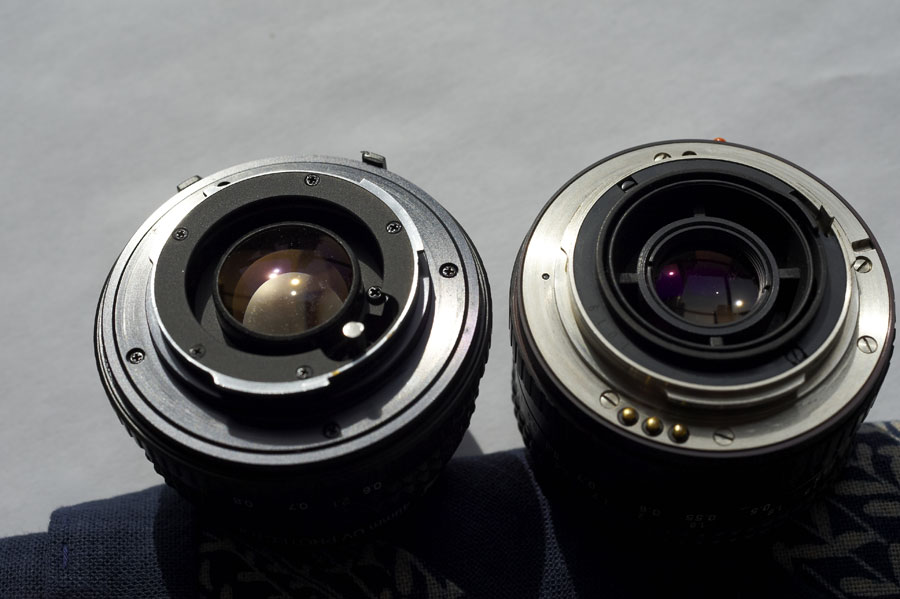
Minolta has three colour reflection (purple,orange,blue)
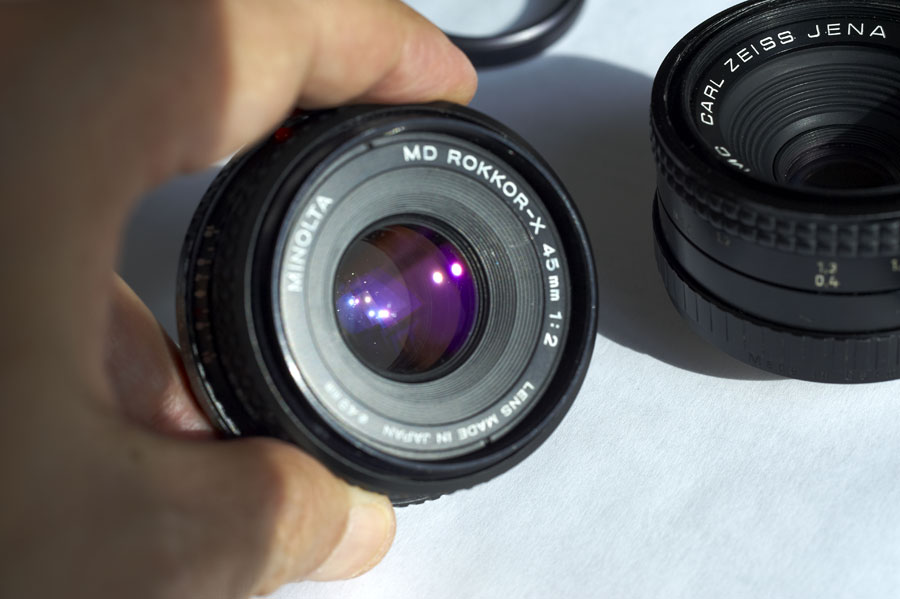
Prakticar has four colour reflection (orange,blue+purple,turquoise)
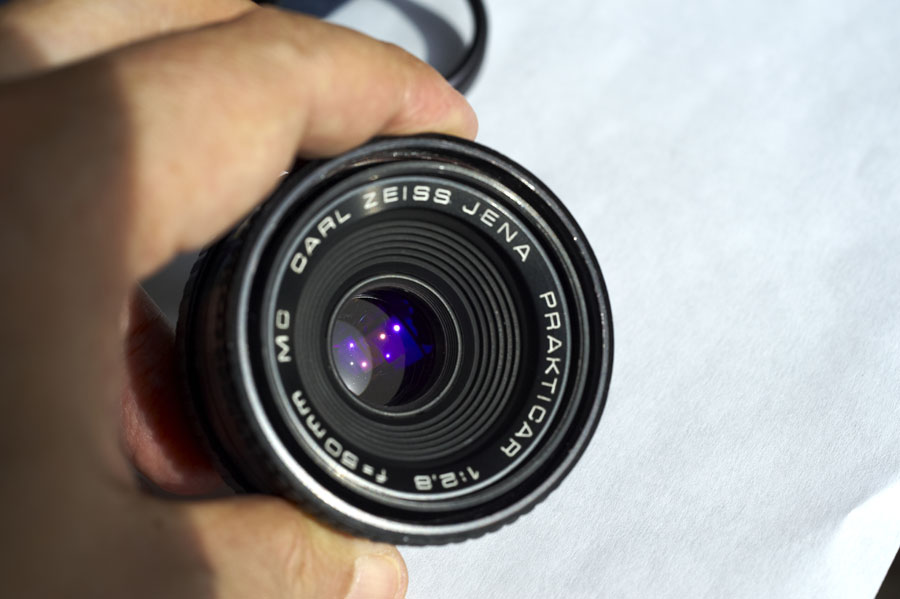
Sorry not good photos, I hastely made them.
_________________
Our Home Page has 18,200 photos in 575 directories today.
Lenses: https://www.pbase.com/kkawakami/top_level_my_lenses |
|
| Back to top |
|
 |
dekiller


Joined: 04 Jun 2008
Posts: 133
Location: Macao
|
 Posted: Sat Feb 21, 2009 4:08 pm Post subject: Posted: Sat Feb 21, 2009 4:08 pm Post subject: |
 |
|
dekiller wrote:
Coating formula changing from time to time. "T" and without "T" was a legal matters only. |
|
| Back to top |
|
 |
|
|
